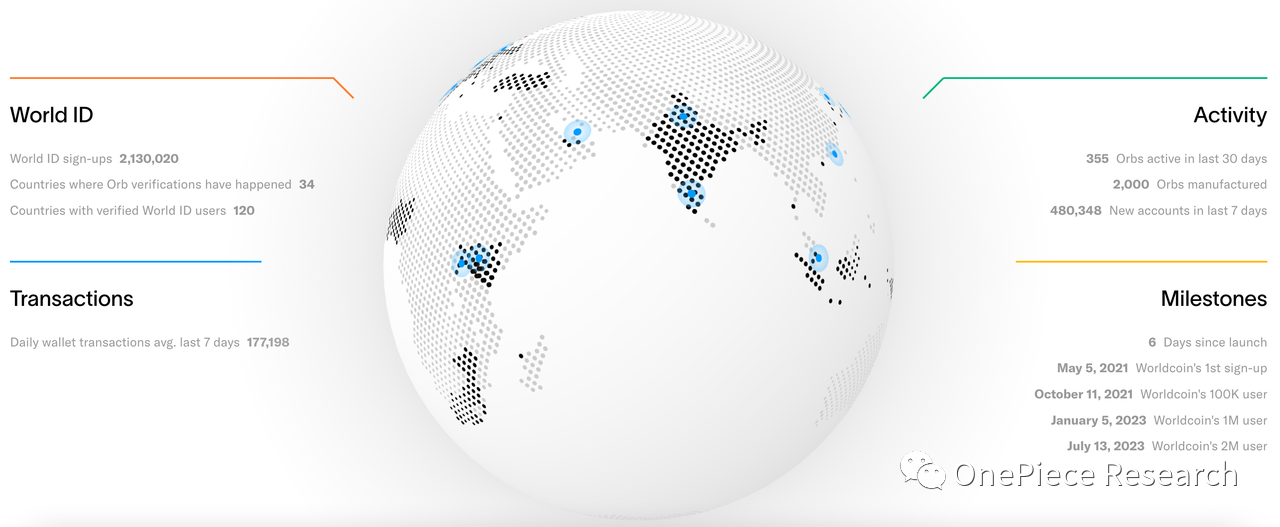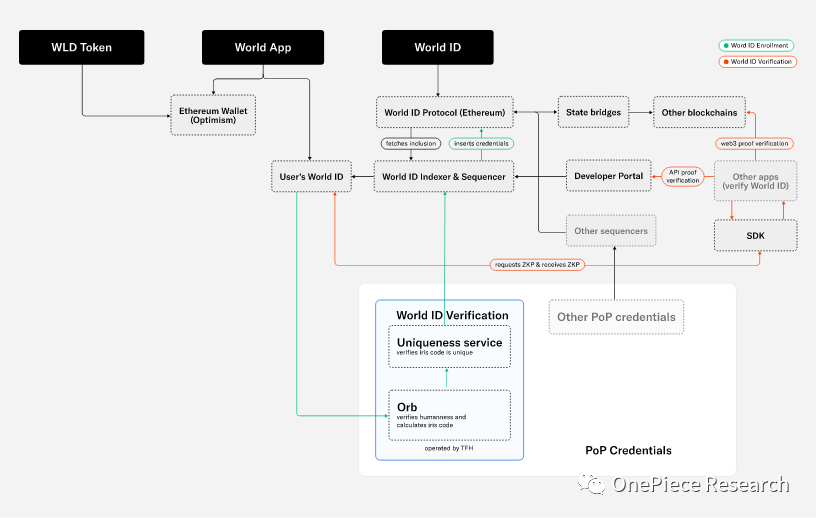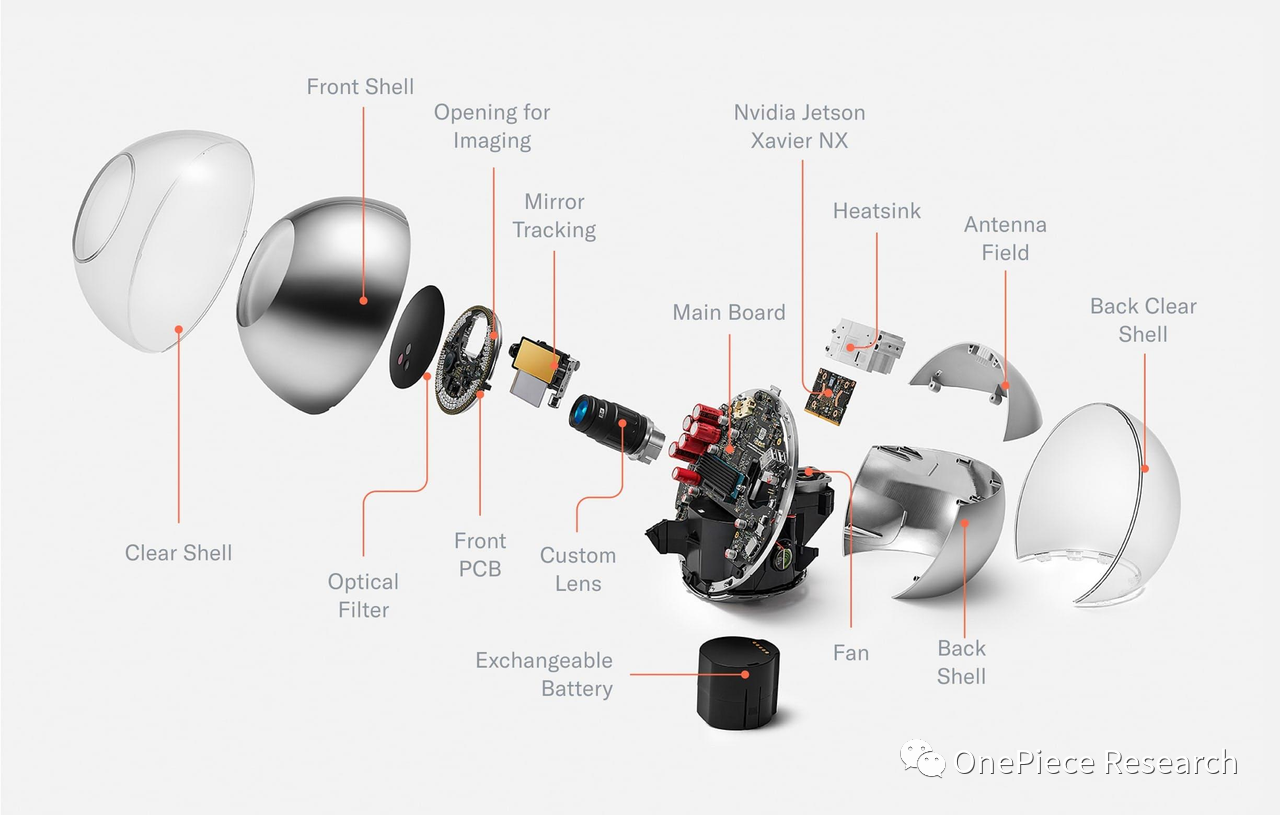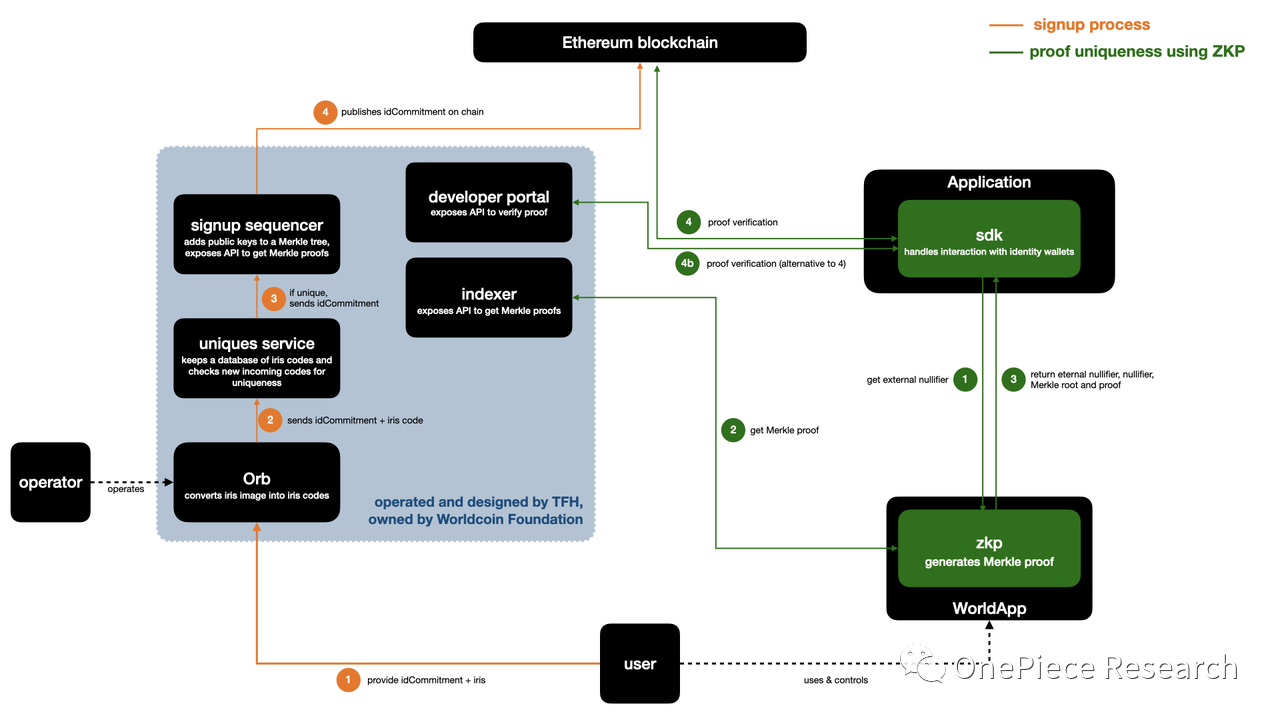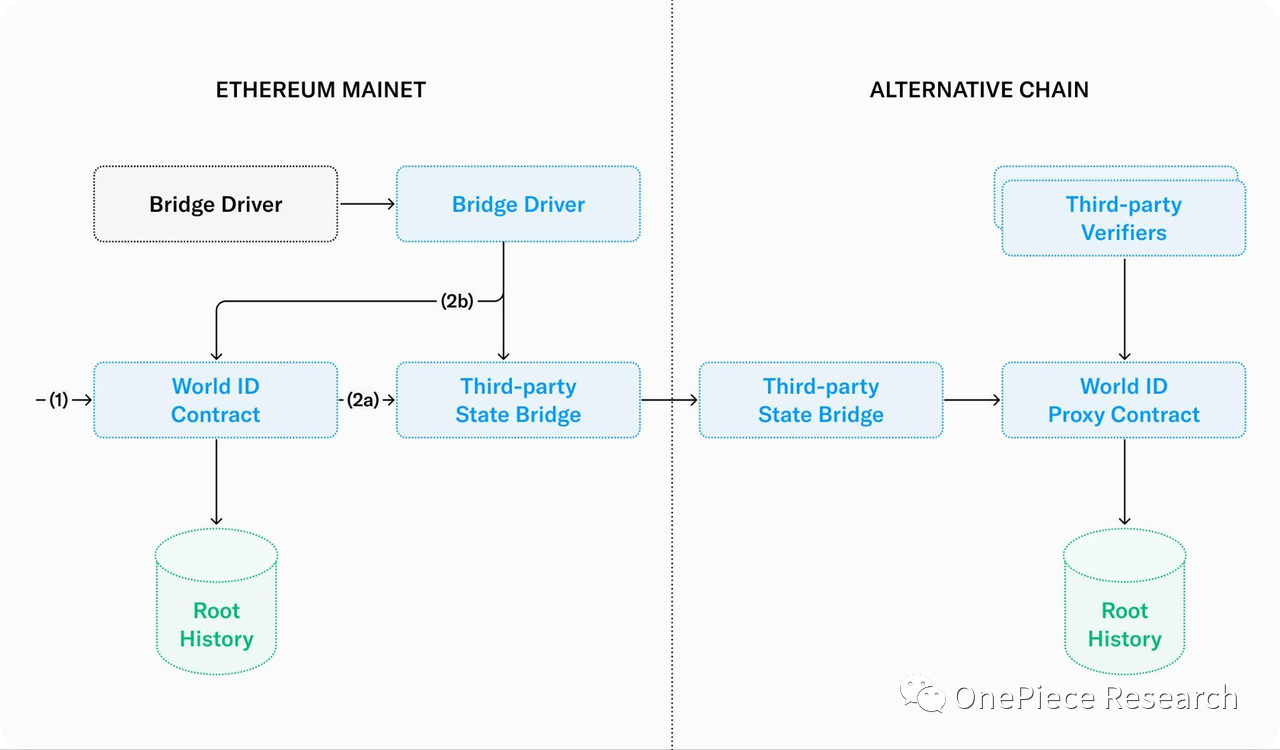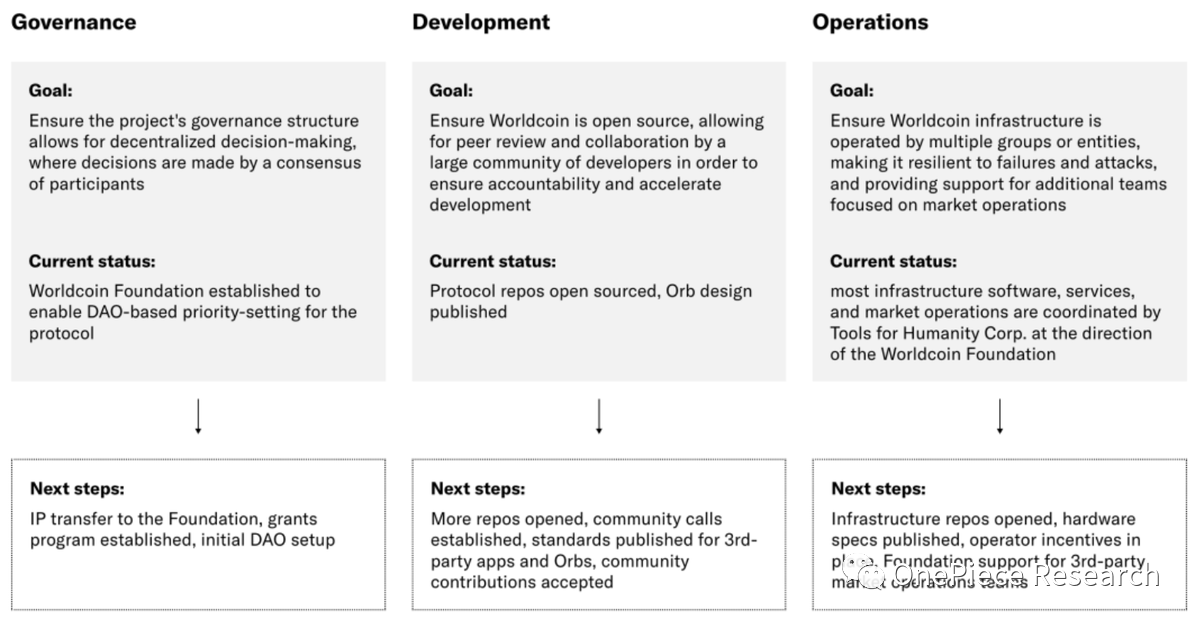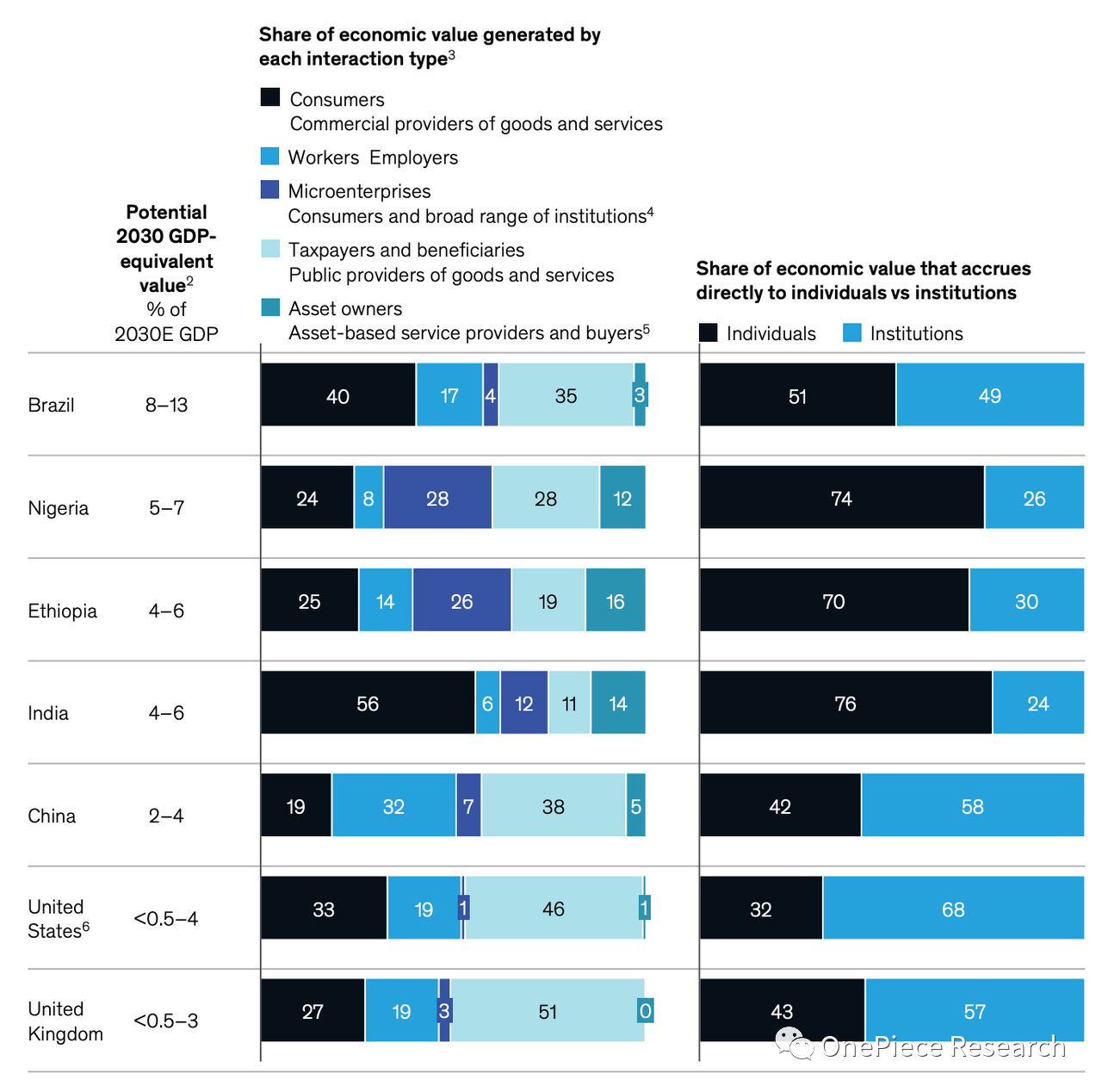OP Research Sociology Experiment of Currency and Global Citizens
Currency and Global Citizens OP Research Sociology ExperimentAuthor: CloudY, Jam
Editor: Vincero, YL
Reviewer: Yasmine
- Exclusive Interview with 1inch Co-founder How does 1inch gradually innovate to grab food from the horse’s mouth in the liquidity battle?
- Extensive Article The Iron Curtain of Regulatory Control in the United States Has Fallen, What Tomorrow Will Crypto Face?
- Here is a list of cryptocurrency observations for the next week $LTC halving event, Evmos 2.0 launch…
Summary
- Karl Marx may like ETH, Dogecoin, and Worldcoin.
Vitalik’s sociological experiment Zuzalu. Zuzalu provides “identity registration certificates” to registered participants through ZuLianGuaiss and zero-knowledge proof technology, and promotes the implementation of democratic governance by setting up a city hall. Therefore, some people compare it to the “abstract sense of the early stage of Ethereum”. The two are naturally connected because of Vitalik, but they also have differences. Zuzalu is metaphysical, while Ethereum is concrete. Ethereum’s programmability allows developers to achieve custom identity authentication through smart contracts. Ethereum’s currency payment is implemented by executing smart contracts, meeting the currency payment that complies with the ERC20 standard, but mainly using ETH.
- Elon Musk’s Mars colonization plan. Musk’s “Starlink” clause states that Mars is a free planet and does not recognize Earth’s laws.
Since his vision is to take humans to Mars, human identity authentication and currency payment on Earth need to be redesigned for Mars. Acquiring Twitter, accepting Dogecoin and other cryptocurrencies as payment methods undoubtedly becomes an important part of Musk’s Mars colonization plan.
- Sam Altman’s “World Citizen” concept.
Altman discovered that many people in the world, especially those represented by citizens of third world countries, have difficulty obtaining legal identity documents, and the financial infrastructure in these countries is still underdeveloped. Therefore, these people also have difficulty having basic bank accounts. The construction of Worldcoin provides a new digital identity authentication and currency system, which achieves identity authentication by scanning the iris of every person on Earth, with $WLD as the currency within its ecosystem.
The above-mentioned three people’s visions have the following common points:
- 1) They all focus on and explore the issues of identity authentication and currency payment in a broad sense.
- 2) They achieve the above-mentioned issues by building world-class platforms.
*Note [1]: Marx advocated that the proletariat should unite to oppose exploitation and oppression and strive for the liberation and progress of all mankind.
*Note [2]: From the consumer service test terms of Starlink at launch.
*Note [3]: Usually refers to those who consider themselves beyond national borders and ethnic identities, and regard all humanity as a whole community.
Zuzalu: Exploring Borderless Nations
Zuzalu’s Vision and Technical Requirements
Zuzalu is a real-world encrypted community, also known as a summer camp about encryption, immortality, and philosophy. In Zuzalu, participants register and obtain identity authentication using ZuLianGuaiss and zero-knowledge proofs to verify residents’ identities. This experiment aims to explore the programmability and smart contracts of Ethereum to achieve custom identity authentication and digital currency payments.
At Zuzalu, participants include researchers, scholars, founders, etc., who will delve into topics such as longevity, public goods, zero-knowledge proofs, artificial intelligence, and coordinated and networked states over a two-month period. Zuzalu is dedicated to exploring how blockchain technology can be applied to urban governance and operations to improve process transparency, trustworthiness, and verifiability. Longevity is one of the important topics at Zuzalu, as blockchain technology is believed to enhance efficiency in data management, intellectual property protection, trial transparency, and fundraising in the field of life sciences. Additionally, Zuzalu explores how blockchain can address the extreme risks brought about by artificial intelligence. The development of artificial intelligence may lead to superintelligence, and blockchain technology is considered to be capable of countering the risks posed by superintelligent artificial intelligence.
According to descriptions from multiple participants, Zuzalu aims to establish a borderless digital nation, where each digital citizen has fairer and more transparent identity authentication and a customizable digital currency payment system.
In summary, Zuzalu is a unique and ambitious experiment that combines blockchain technology, cryptocurrency, life sciences, artificial intelligence, and philosophy. It seeks to improve various aspects of society, from urban governance to scientific research and artificial intelligence security. Participants collectively envision a future where technology promotes inclusivity, transparency, and global cooperation in the digital realm.
*Note [4]: Sourced from Shuyao (Twitter @hotpot_dao)
The Elon Musk Matrix: Prospects of Xeet with Digital Identity and Dogecoin with Digital Payments
The Musk Matrix
Xeet (formerly Twitter) and Dogecoin serve as the foundational matrix linking the Musk Matrix.
Xeet, as a globally renowned social media platform, has a massive user base. Xeet can provide Musk with a powerful platform for digital payments and cryptocurrency promotion. By integrating Xeet with digital payment capabilities, the popularization of digital currency payment methods can be driven, enabling users to engage in digital payment transactions on Twitter.
Furthermore, Musk has mentioned and “shilled” Dogecoin multiple times, demonstrating his interest in cryptocurrency. Although Dogecoin originated as a meme coin, it has gained more recognition and attention due to Musk’s support. By promoting the development and application of Dogecoin, he can further explore and popularize cryptocurrency as a means of payment, applying digital currency payments in a broader range of commercial scenarios.
The aforementioned Xeet and Dogecoin, along with Musk’s other business ventures, can be well connected to form a vast and comprehensive digital ecosystem. For example, companies like Tesla, which is already listed, as well as unlisted companies like SLianGuaiceX, SolarCity, and The Boring ComLianGuainy, can promote services that support cryptocurrency payments through the Xeet platform. Users can use digital currency to purchase Tesla electric vehicles, SLianGuaiceX space travel, and other services, enabling payment applications. In addition, Neuralink, the neural brain science company, can also play an important role in the digital payment ecosystem. In the future, through brain-machine interface technology, users may even be able to directly use brain signals for digital payment authentication, further enhancing the convenience and security of payments.
(Source: OP Research)
*Note [5]:
[1] Tesla, Inc.: Tesla is a leading electric vehicle manufacturer and energy company.
[2] SpaceX (Space Exploration Technologies Corp.): SpaceX is a private aerospace company founded in 2002. The company aims to reduce the cost of space exploration and achieve the goal of human landing on Mars. SpaceX has successfully developed various heavy rockets such as Falcon 1, Falcon 9, and Falcon Heavy, and has become the first aerospace company to achieve vertical rocket recovery and reuse. Its greater role in the Musk matrix is to coordinate with Starlink’s layout.
[3] SolarCity: SolarCity is a solar energy services company founded in 2006.
[4] Neuralink: Neuralink is a neuroscience company founded in 2016. The company aims to develop brain-computer interface technology to connect the human brain with computers and other external devices, providing solutions for treating neurological disorders and enhancing human cognitive abilities.
[5] The Boring Company: The Boring Company is a tunnel construction company founded in 2016. The company aims to develop underground tunnel systems to alleviate urban traffic congestion.
Musk’s enthusiasm for digital payments
It can be said that Musk has always had dreams in the field of digital payments and has been fitting it into his business matrix through continuous exploration.
According to his own account, his mission is to promote technological progress and create a better future, and the payment field is one of the technological innovations he values. His pursuit and enthusiasm for digital payment solutions can be seen from his founding of X.com (later renamed PayPal). Musk’s initial intention in creating PayPal was to create a global payment method that would make cross-border transactions easier and overcome the limitations of traditional payment systems. Although PayPal was later acquired by eBay, his interest in digital currency and payments has never waned. In a sense, Twitter’s renaming to Square, with the icon changed to “X,” is also a homage to PayPal.
In the subsequent entrepreneurial process, he explored projects related to digital currencies and encryption technology. Until the emergence of Dogecoin and the acquisition of Twitter, Musk’s digital payment matrix returned to his business landscape and may play an extremely important role in the future.
In addition, Musk praises the powerful functions of WeChat, stating that it can do everything and has no spam messages [6]. He appreciates its features, including messaging, voice and video calls, social media, food delivery, mobile payments, games, and news. Elon Musk’s appreciation of WeChat may be because he sees the success of this application in social, payment, and service aspects, and believes that its versatility and user experience have inspiring significance in the field of digital payments.
*Note [6]: https://hypebeast.com/zh/2022/6/elon-musk-wants-twitter-to-be-more-like-tiktok-and-wechat
Musk’s Web3 Ambition
Xeet accounts can serve as digital identities and even digital wallets; Dogecoin may just be the beginning of its “new digital payment” matrix.
Xeet accounts play a crucial role, serving not only as digital identities but also functioning as digital wallets. By leveraging social graphs, Xeet accounts can effectively define and authenticate user identities, making digital identity verification more secure and convenient.
Specifically, Xeet accounts can use social graphs to define/authenticate identities and link NFT PFP (Profile Picture) and NFT Tweet Tiles to Twitter avatars. “Tweet Tiles” is a feature introduced by Twitter that allows for customizable formats to be attached to tweets, supporting user interaction with Twitter Tiles, covering text, images, videos, or other elements, making the tweet timeline more dynamic and visual.
Twitter is expanding this feature to the NFT market, where NFT projects or creators can showcase NFTs in their tweets, providing a platform for NFT supporters to display and share their digital collections.
According to a Financial Times report in January this year, Twitter, under the leadership of Elon Musk, was exploring the introduction of payment services on its platform as a means of generating new revenue. Esther Crawford, a core member of Twitter, is designing the payment architecture with the goal of providing “peer-to-peer transactions and savings accounts” and other financial services. Musk envisions turning Twitter into a “universal app” that integrates messaging, payments, and commerce. Twitter has registered with the U.S. Treasury Department as a payment processor and is in the process of obtaining necessary regulatory approvals.
Therefore, Musk’s payment dream can be realized through Xeet, supporting Dogecoin payments, and integrating his other business ventures. Such a comprehensive ecosystem will bring new innovations and possibilities to the field of digital payments, driving the widespread adoption of digital currencies and further development of payment methods. We may witness a digital ecosystem built by Xeet, Dogecoin, and other commercial versions, bringing more innovation and possibilities to digital payments, changing our payment methods and habits.
This future may not be far away.
(Source: Twitter development team @XDevelopers)
Worldcoin and the Third World
How does Worldcoin physically prove that I am “me”?
Worldcoin claims to address the problem of human identity verification through privacy-first, self-control, and decentralized means.
According to the World Bank’s ID4D database, nearly 1 billion people worldwide lack any form of legally recognized identification. Another 3.4 billion people have some form of legally recognized identity but face difficulties in using it in the digital world.
This “digital identity” refers to: being able to have clear identity verification through digital channels, unlocking access to banking, government welfare, education, and many other critical services. Digital identity cards not only enhance citizen and societal capabilities but also achieve genuine, inclusive economic benefits.
The vision of Worldcoin is to become the largest, most inclusive, and global public product for identity and finance.
The Worldcoin protocol currently includes:
- World ID is a privacy-protecting digital identity designed to solve the problem of personal identity verification, using biometric proof to verify an individual’s unique personality.
- Worldcoin (WLD) is a digital currency that can be freely distributed to independent individuals, where permitted by law.
- World App is the first application compatible with World ID, which enables the storage of digital assets and stablecoins supported by fiat currency. It allows for global payments, purchases, and transfers.
According to the data from Worldcoin on July 13, the number of World ID registrations has exceeded 2 million, and it took less than half the time to reach the first one million. On average, more than 40,000 people register and verify their World ID every week. Registrants from around the world, including Barcelona, Berlin, Buenos Aires, New York, Seoul, and Tokyo, register through The Orb, developed by Tools for Humanity (TFH), for iris and biometric scans. As a reward, they receive 25 WLD tokens. Alex Blania, co-founder of Worldcoin and CEO of Tools for Humanity, said: “The goal of Worldcoin is to enable anyone in the world, regardless of background, geographic location, or income, to enter the growing digital and global economy in a privacy-protecting and decentralized manner.“
Technology and Applications of Worldcoin
As shown in the diagram, to obtain World ID, users first need to download the World App to store their World ID. Then, they can schedule an appointment on the official website for iris scan verification. Once verified through The Orb, individuals will receive a World ID.
This World ID can be used on the blockchain to prove the user’s identity to other protocols through zk proofs, and it can also be used across different blockchains. Additionally, users can receive a certain amount of WLD tokens weekly through the World ID, where permitted by law. The World App allows users to use the App on the Optimisam chain via WalletConnect, such as for trading on DEX.
Importantly, other developers can utilize the World ID SDK framework in their applications without permission, simplifying the interaction between Web3 and Web2 applications.
Technical Architecture of Worldcoin
When performing identity verification, The Orb first uses sensors to ensure that the person standing in front of it is human. Then, it captures, processes, and immediately deletes a series of iris images by default to create an iris code, which is a digital representation of iris texture.
After creating the iris code, although The Orb immediately deletes the iris images by default, individuals can choose to back up their images. They can share their iris images with Worldcoin to contribute to the training of iris detection and segmentation models and similar algorithms for this project.
Worldcoin’s promotion is based on the OP Stack to establish its own public chain, which will enable it to inherit the account anonymity and transaction transparency features of Ethereum. As shown in the figure below, after establishing the World ID using Orb, the data will be published on the chain through the Worldcoin Protocol and can be verified by other applications through zk-proof on the WorldApp to verify their identity. The built-in cross-chain architecture of the SDK allows it to share identity information among the Ethereum mainnet, other Layer2 solutions such as Optimism and Arbitrum, and non-EVM compatible chains such as Solana and Sui.
Worldcoin emphasizes the decentralization of the entire protocol in its roadmap, which can be summarized as decentralized governance, development, and operation:
- Governance: Foundation management based on DAO
- Development: Protocol open source and device design transparency
- Operation: Diversification of operating entities
Applications of Worldcoin
Worldcoin aims to enable everyone to participate in the global digital economy through DeFi and DID, regardless of their location, and achieve equal opportunities on a global scale. The more developed the network is, the more noticeable its effects should be. In other words, by establishing the identity system World ID that belongs to independent individuals and the wallet WorldAPP that enables global payments, purchases, and transfers, Worldcoin becomes the gateway to Web3, giving everyone the opportunity to participate in the global economy and solve the problem of inequality of opportunities that exists mainly in developing countries.
This is also why Worldcoin plans to distribute WLD for free to 1 billion people worldwide, in order to rapidly expand its financial network and establish a very crypto-centric narrative. According to the Worldcoin article, it has the following applications:
- Identity
Real-person identification: Bots, spam emails, and automated calls on Twitter are symptoms of a lack of robust and seamless digital identity. The rapid development of AI models exacerbates these problems, as these models can bypass captchas and generate convincing “human” content. Therefore, the solution proposed by Worldcoin for identity verification is crucial and can be used as a public infrastructure. If every message or transaction contains “verified human” properties, a large amount of noise can be filtered out from the digital world, especially in defense against Sybil attacks.
Currently, collective decision-making in Web3 largely relies on token-based governance (one token, one vote), although platforms like Gitcoin have adopted quadratic voting to limit whales, they are still vulnerable to Sybil attacks. When digital identity is introduced into the real world, it will face issues of resource allocation and over-incentivization. Therefore, reliable and anti-Sybil personality proofs like World ID open up a new solution for global democratic governance and resource allocation mechanisms, making it increasingly important for everyone to participate in their governance.
- Identity-based Financial Applications
Enterprise Incentive Adjustments: Systems such as coupons, loyalty programs, referral programs, and other systems that share value with customers are prone to witch attacks and internal cheating because the cost of misconduct is extremely low, but the rewards are high. Therefore, frictionless and anti-fraud digital identities help adjust incentive measures and benefit consumers and companies. This allows users to participate in the operation of a company or even partially own a company in a form other than stocks.
Equal Distribution of Social Resources: Social subsidies and social welfare are particularly important in developing economies, as these countries’ social welfare programs not only face the problem of using false identities to obtain resources beyond their fair share, but also the misallocation of resources due to outdated identity statistics. In 2021, India saved $5 billion in subsidy programs by implementing a biometric system that reduces fraud. Decentralized identity proof protocols can extend similar benefits to any project or organization globally. With the advancement of artificial intelligence, the right to fair distribution and the value created through universal basic income will be able to partially offset the problem of economic power concentration. World ID can ensure that each person only registers once and guarantee fair distribution.
- Overtaking Opportunities for Third World Countries
The Worldcoin platform, based on identity proof, on-chain credit systems, and crypto payment systems, is precisely a solution to the current predicament of third world countries. The current world currency system and economic situation, as well as factors such as climate, pandemics, and wars, have gradually deteriorated the economic environment of third world countries. They urgently need a breakthrough to reverse their decline, and the current improvement in infrastructure and blockchain technology gives them the conditions to do so. The demand for digital identity and a new currency system gives them the motivation. Take Africa as the most typical example:
1) Current Economic Situation of African Countries
The April 2023 edition of “African Pulse” report shows that due to global economic uncertainties, poor performance of the largest economy in Africa, high inflation, and the sharp slowdown in investment growth, economic growth in sub-Saharan Africa remains sluggish and is insufficient to reduce extreme poverty. Economic growth is expected to slow from 3.6% in 2022 to 3.1% in 2023.
In December last year, Ghana’s inflation rate rose to 54.1%, reaching the highest level in nearly 22 years. In January this year, Nigeria’s inflation rate rose from 21.34% in the previous month to 21.82%, the highest level since September 2005.
-
The government faces increasing debt payments and liquidity problems, which are related to the high borrowing costs caused by bank failures in Europe and America and the appreciation of the US dollar.
-
Africa’s natural resource wealth has huge untapped economic potential, which requires good sector governance, appropriate taxation to obtain a larger share of resource rents, as well as regional cooperation and investment.
-
Curbing inflation remains the core of achieving macroeconomic stability. African governments have the right to carry out internal reforms to restore macroeconomic stability and better determine the priority of expenditures.
-
Economic performance in various sub-regions of sub-Saharan Africa is inconsistent.
-
Investment growth has significantly declined across all sub-regions, resource-rich and resource-poor countries, as well as among different types of investors (public, private, and foreign).
2) Infrastructure
In recent years, the construction of internet and mobile internet infrastructure in Africa has been rapid. According to the “2022 Sub-Saharan Africa Mobile Economy” report released by the Global Mobile Communications System Association, by the end of 2021, more than 500 million people in sub-Saharan Africa have subscribed to mobile services, with a mobile penetration rate of 46%. The report predicts that by 2025, the region will have 613 million people subscribing to mobile services, and the user penetration rate will reach 50%. Moreover, more than 84% of internet connections in Africa are made through smartphones. Data from the Nigerian Federal Communications Commission shows that as of June 2022, the number of mobile internet users in Nigeria has exceeded 150 million, with an internet penetration rate of about 70%.
Financial technology and e-commerce have also become popular application tracks in Africa in recent years. Data from DataSpring shows that in 2022, despite the economic downturn, these two tracks still maintained strong growth. The active user base of financial mobile applications in Africa increased by 26% from January to December 2022, exceeding 73 million; the active user base of shopping applications increased by 6% from January to December 2022, exceeding 36 million.
3) Blockchain Technology
Blockchain technology has evolved from the initial peer-to-peer cash system of Bitcoin to the global computer of Ethereum. With the emergence of smart contracts, a large number of new technologies and concepts have emerged. These mature solutions can be used to improve the current world monetary system:
-
Different solutions under the same standard: Layer2/Rollup
Each country operates its own solution according to its own policies under the same standard, unifying “measurement” and solving system friction in multi-party cooperation.
-
Identity and credit system: DID
On-chain identity and credit replace traditional banks for personal credit assessment and make national identity authentication systems compatible with each other, optimizing immigration management.
-
Asset and data ownership: Wallet + RWA + zk
Based on the blockchain account system, while using zk proofs to ensure the security of national information and citizen data, it protects personal asset ownership, reduces the threshold for financial asset transactions, and provides everyone with the right to participate in economic activities.
4) International Monetary System
From the Bretton Woods system established by 44 countries including the United States, the United Kingdom, France, West Germany, Canada, Italy, and Japan, to the Jamaica system that provides greater exchange rate flexibility and policy space for developing countries, developed countries and international institutions have dominated, resulting in developing countries having less say in decision-making and the formulation of international financial rules. At the same time, due to the challenges that developing countries may face in terms of financial system and technological reserves, their comprehensive participation in the international monetary system is limited. Therefore, in the evolution process of the international monetary system, there are almost no opportunities for developing countries to participate. Based on blockchain identity verification and cross-border instant payments based on cryptocurrency, developing countries may have an opportunity to establish and deeply participate in the new international monetary system.
5) Demand for Digital Identity and New Monetary System:
Unlike developed countries and major economies, third-world countries mainly rely on cash currency systems, lack mature credit systems, and have just begun to use mobile payments. They have not established a sound banking system. Therefore:
- The cost of national borrowing is high and external investment is difficult.
- The scope and categories of economic activities are limited.
- There are not many historical obstacles in the process of adopting a digital currency system.
Currently, there are still a large number of citizens who do not have a digital identity or do not benefit from a digital identity, as shown in the figure below. Each developing country has the potential for significant GDP growth from the use of digital identity, and individual citizens may gain more than 50% of the value generated from a digital identity. Taking Nigeria as an example, 81% of its workforce is self-employed. A digital identity can help them participate in small and micro-businesses and investments, thereby obtaining support and protection from the government. It can also help the government recover tax revenue lost due to income fraud. For Ethiopia, a digital identity can bring about 41 million potential users to its financial industry because it allows remote identity authentication by banks, thereby providing corresponding financial services, which could generate $2.5 billion in investment. Therefore, the economic value created by a digital identity in emerging economies is far greater than in mature economies.
Significance of a World-class Platform
This world-class platform represents a new narrative and has a huge potential market because its users are the entire human population, which is what DeSoc and Satoshi Nakamoto want to achieve.
Currently, world-class platforms include major technology and internet giants from the United States, China, Europe, Southeast Asia, and Africa.
In the United States, companies such as Google, Microsoft, Amazon, and Apple provide internet services such as search engines, cloud computing, e-commerce, and smart devices on a global scale. Representative Chinese companies include Baidu, Tencent, Alibaba, and Huawei, which also cover areas such as search engines, social media, e-commerce, cloud services, and communication devices. Although Europe does not have giants like the United States and China, it also has many well-known technology companies, such as SAP, Spotify, and ARM.
In addition, Southeast Asia and Africa also have platforms with significant influence, such as Grab and Transsion. Grab is the largest ride-hailing service platform in Southeast Asia, providing services such as taxi, food delivery, and courier. Transsion is a mobile communication device manufacturer headquartered in China and occupies a significant share of the African market. Its mobile phone brands include Tecno, Infinix, and Itel.
These world-class platforms have a large user base and extensive influence in their respective regions. With the rise of emerging technologies such as blockchain, digital identity authentication, and payments, more new global platforms may emerge in the future. They are expected to change the existing competitive landscape and promote the vigorous development of the digital economy globally.
Both DeSoc and Satoshi Nakamoto’s Bitcoin attempt to break the monopoly of the traditional internet industry by providing users with more secure, autonomous, and privacy-protected digital identities and payment methods through decentralized technology. This is similar to the business concepts of Zuzalu, Worldcoin, and Musk mentioned in this article. They are all exploring the field of digital identity authentication and currency payment, and trying to build world-class platforms to drive user-driven ecological development, giving users greater control and privacy protection.
The potential market for these global platforms is huge because their user base is the entire human population. This not only includes highly developed regions such as the United States, China, and Europe, but also developing countries such as Southeast Asia and Africa. In developing countries, digital identity authentication and payment systems are crucial because many people lack legitimate identity authentication and financial infrastructure, and these global platforms are trying to fill this gap. This will bring more convenience and opportunities to people in these regions.
However, there are many challenges to establishing such new platforms globally, including technical difficulties, legal and regulatory issues, privacy, and data security. Nevertheless, these emerging technologies and platforms are trying to change the existing internet landscape and bring more rights and choices to users.
Conclusion
Sam Altman and Elon Musk both want to do the same thing, that is, identity + payment, but the implementation paths are different.
- 1) Altman starts with determining the identity of each person, distributing airdrops, and gradually guiding users to use built-in wallets to establish the ecosystem, more like surrounding the city from the countryside, building from the bottom up.
- 2) Musk uses the formed Twitter social graph to build internet identity, and through the integration of their own Web3 projects and assets, transforms Web2 into Web3, like a constitutional monarchy that changes the existing ecosystem.
By comparing Worldcoin, Twitter (now Xeet), and Vitalik’s sociological experiment (Zuzalu), we can draw the following conclusions:
-
Worldcoin: Worldcoin’s main goal is to achieve digital identity authentication through biometric verification such as iris scanning, and provide a digital currency system to 1 billion people worldwide through the free distribution of tokens ($WLD). Worldcoin attempts to build the global digital identity authentication and currency payment system from the top down, gradually guiding users to use built-in wallets to establish a global digital identity authentication and currency payment system. It focuses on solving the problem of incomplete global citizen identity authentication and financial infrastructure.
-
Twitter (Xeet): Twitter’s vision is to achieve digital identity authentication and digital currency payment through social graphs and the existing Twitter social network. Elon Musk plans to use the existing Xeet user base and social graph to build digital identity. By integrating Web3 projects and assets, transforming Web2 into Web3, and upgrading the existing ecosystem to a new digital payment ecosystem. This approach introduces digital identity and payment into the existing social network through reform and integration of the existing platform.
-
Zuzalu (Vitalik’s sociological experiment): Zuzalu is a sociological experiment that provides identity authentication through ZuLianGuaiss and zero-knowledge proof technology, and explores the customization of Ethereum and the scalability of smart contracts to achieve customized identity authentication and digital currency payment. The goal of Zuzalu is to explore how blockchain technology can supervise urban governance and operation, improve process transparency, trustworthiness, and verifiability. This experiment focuses more on exploring the application of digital identity authentication and payment methods in urban governance and social operations.
In conclusion, these three projects have differences in their goals and implementation paths. Worldcoin focuses on solving the identity authentication and financial infrastructure issues for citizens in third world countries, aiming to achieve this through the construction of a multi-layered and multi-dimensional ecosystem. Twitter (Xeet) plans to introduce digital identity authentication and payment through existing social networks and social graphs, upgrading the existing platform into a new digital payment ecosystem. Zuzalu is an experimental project that explores the application of digital identity authentication and payment methods in the governance and social operation of future cities.
Reference
[1] “Tweet: Worldcoin in Detail”
1/28 OpenAI创始人要向10亿人空投的@worldcoin是什么?
随着OpenAI的ChatGPT发布后掀起一波AI热潮,但同时OpenAI创始人Sam正在谋划另一个同样划时代项目:WorldCoin作为ChatGPT和WorldCoin这两个世界级项目背后的男人,Sam也被誉为接棒埃隆马斯克的科技领袖,今天为大家解读尚不为人知的WorldCoin
— 陈剑Jason 🐡 (@jason_chen998) March 20, 2023
[2] “Digital Identity: The Key to Inclusive Growth”
https://www.mckinsey.com/~/media/McKinsey/Business%20Functions/McKinsey%20Digital/Our%20Insights/Digital%20identification%20A%20key%20to%20inclusive%20growth/MGI-Digital-identification-Report.ashx
[3] “Vitalik: Biometrics Are More Effective in the Short Term, But Social Graph-Based Technology Is More Robust in the Long Term”
https://vitalik.eth.limo/general/2023/07/24/biometric.html
[4] “Worldcoin: Pre-alpha Version of Cyberpunk Social Currency”
理解WorldCoin–初始化赛博朋克2027
1⃣赛博朋克社会货币的Pre-alpha版本:WorldCoin
近代以来,每当时间来到这个世纪的20年代~50年代,人类就会步入一个新的技术爆炸时代
如古登堡活字印刷术、珍妮纺织机、瓦特蒸汽机、后膛枪、电报、电子计算机、核能等等新史诗性技术发明都是发生于20年代~50年代… pic.twitter.com/MCvQo4X9d0
— NingNing (🌿,👻) (@0xNing0x) May 15, 2023
[5] “Deception, Exploited Workers, and Cash Handouts: How Worldcoin Recruited Its First Half a Million Test Users”
https://www.technologyreview.com/2022/04/06/1048981/worldcoin-cryptocurrency-biometrics-web3/
[6] “Twitter Collaborates With NFT Marketplaces to Enable NFT Tweet Tiles for Collectors”
https://www.nftgators.com/twitter-collaborates-with-nft-marketplaces-to-enable-nft-tweet-tiles-for-collectors/
[7] “Elon Musk Pushes Forward with Twitter Payments Vision”
https://www.ft.com/content/9d84d534-b2dd-4cff-85d1-aee137b26a45
[8] “Africa Pulse”
https://openknowledge.worldbank.org/handle/10986/39615
[9] “Africa Can’t Avoid the ‘Shockwaves’ of the Banking Crisis in the United States and Europe”
http://paper.people.com.cn/rmrbhwb/html/2023-04/15/content_25975829.htm
We will continue to update Blocking; if you have any questions or suggestions, please contact us!
Was this article helpful?
93 out of 132 found this helpful
Related articles
- Outlier Ventures Data-Driven Token Design and Optimization
- EIP-7377 An excellent solution for migrating from EOA to smart contract wallets before the popularization of account abstraction.
- LianGuai Daily | Sequoia Capital reduces the size of its cryptocurrency fund to $200 million; French privacy regulatory agency launches investigation into Worldcoin.
- African Gold Rush I Help Chinese Citizens with Worldcoin KYC, Earning up to 20,000 RMB per day
- Interview with EthStorage Founder How to Scale Ethereum’s Storage Performance through Layer 2 Expansion?
- The Fit21 encryption bill of the American Republican Party has been approved and will enter the full deliberation of the House of Representatives.
- LianGuai Paradigm Stablecoins have their unique characteristics and should not be included in the regulatory frameworks of banks and securities.


